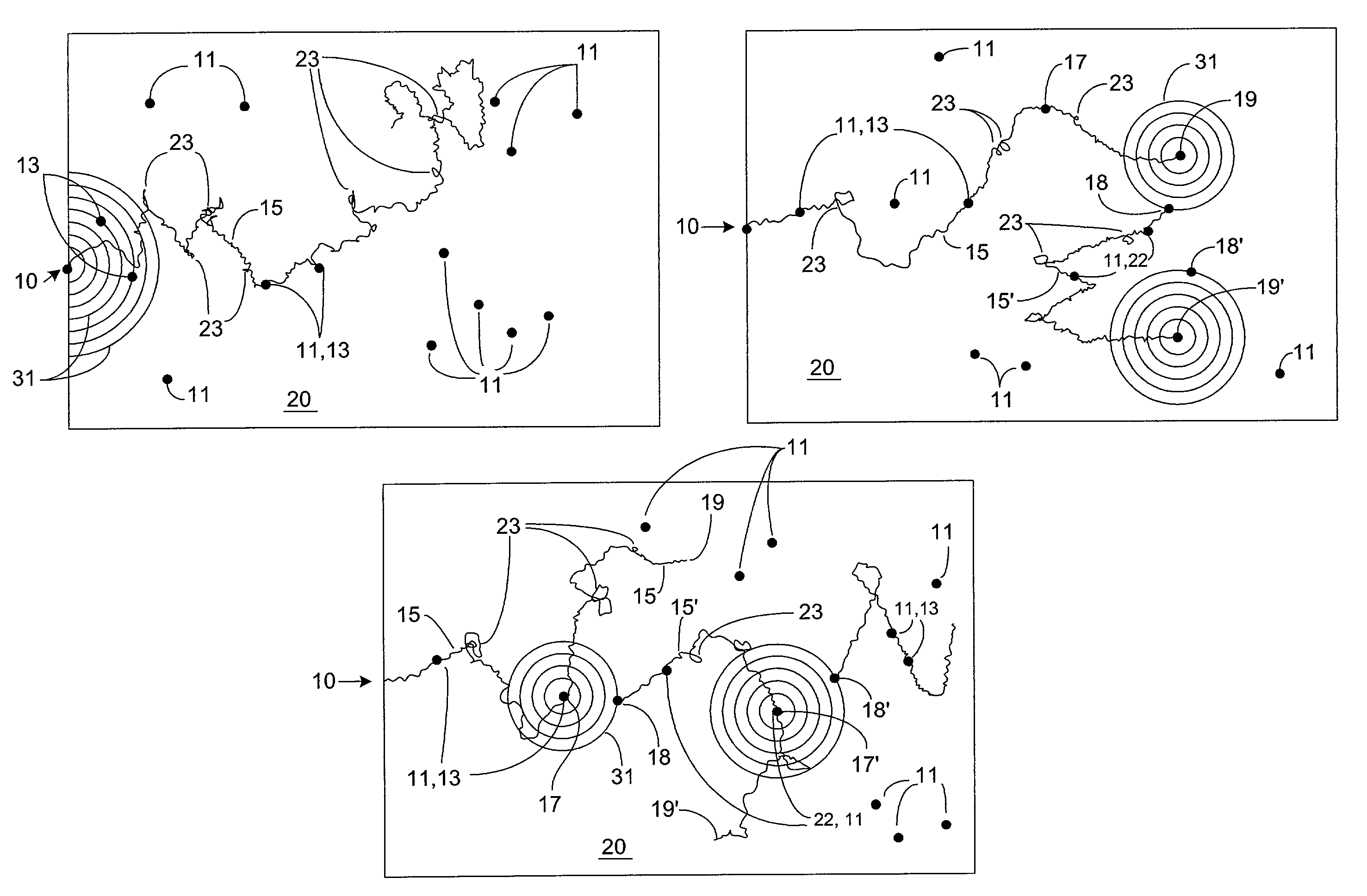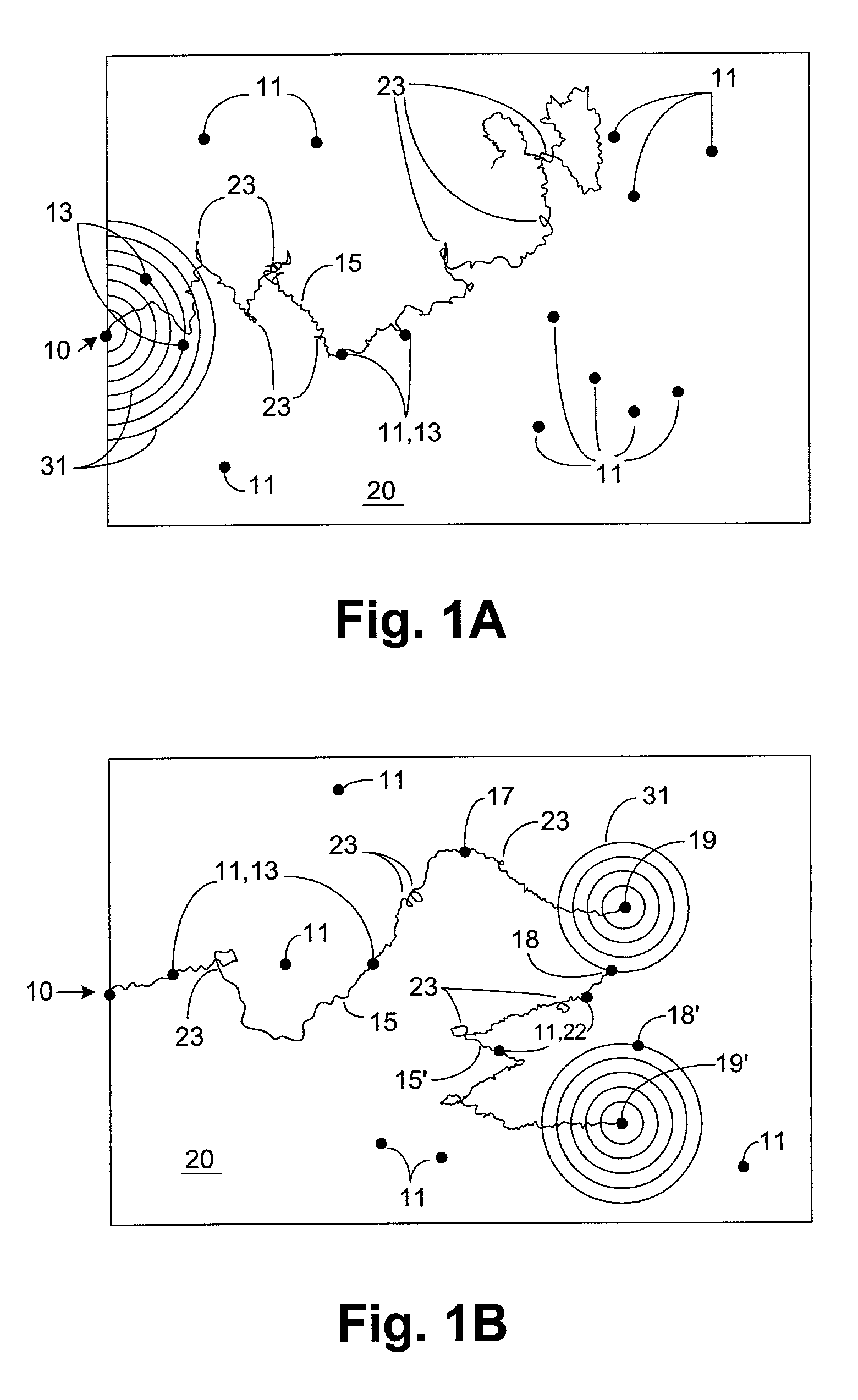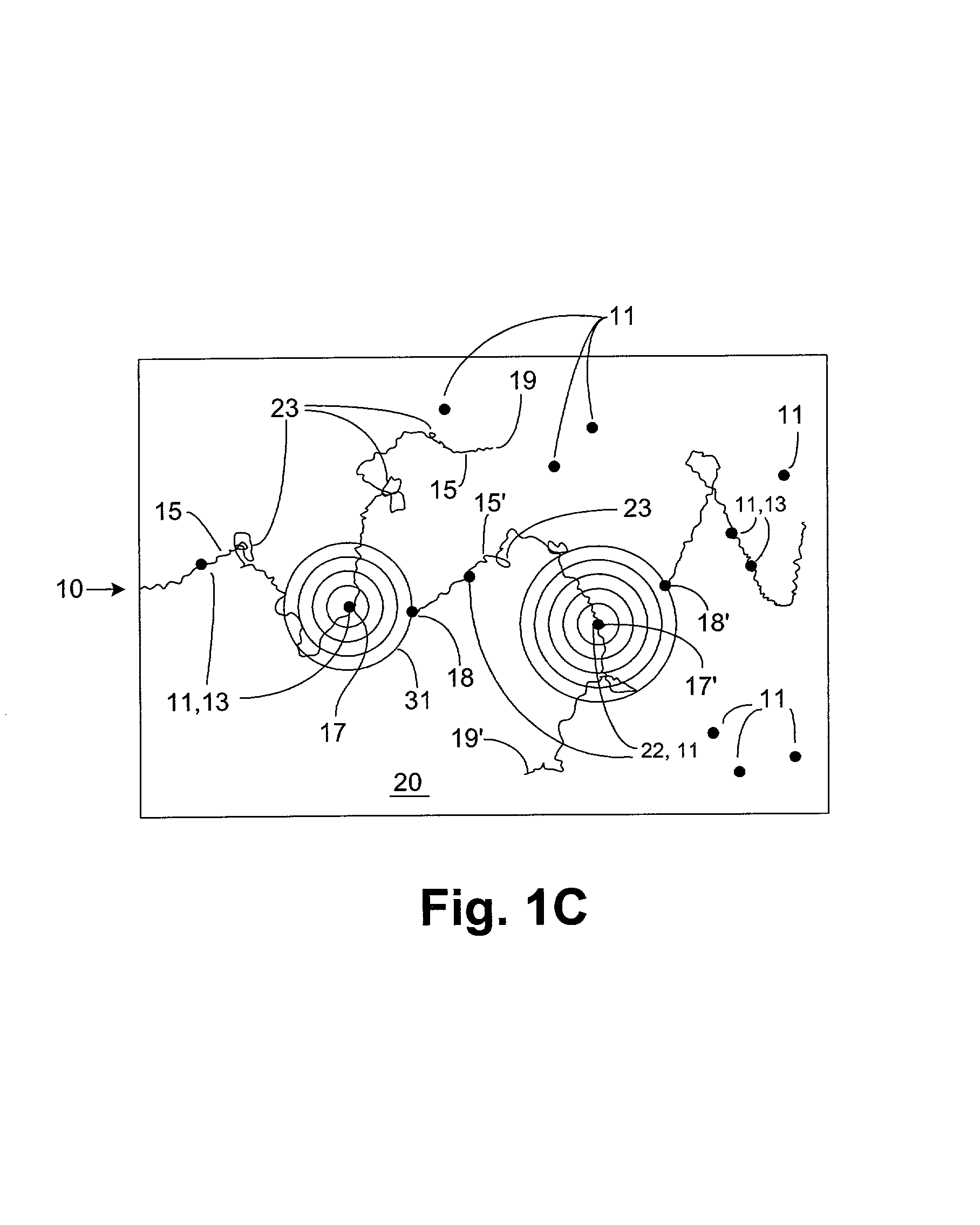Simulation-based functional verification of microcircuit designs
a micro-circuit and simulation-based technology, applied in the field of simulation-based functional verification of micro-circuit designs, can solve the problems of not providing a large enough coverage, preventing the use of exclusive use of such methods, and aggravated difficulty, so as to improve the confidence in the coverage of the dut, the effect of broad coverage and deep coverag
- Summary
- Abstract
- Description
- Claims
- Application Information
AI Technical Summary
Benefits of technology
Problems solved by technology
Method used
Image
Examples
example
[0080]A data processing system is configured to perform a verification simulation process according to the above. The system comprises distinct program modules as shown in FIG. 3, including a user interface 152; a master control process 154; and random simulation, symbolic simulation, satisfiability, and unreachability slave processes 158, 160, 162, and 164 respectively. The system and its operation are described in the Design and Maintenance Specification for CTG Reachability & Control Subsystems attached hereto as Appendix 1.
[0081]The user interface is interactive and comprises the UNIX operating system, including standard UNIX commands such as “fork’ and ‘exec’. Commands are issued to the master control process via a UNIX pipe which feeds inputs to the master control process as standard input. The user interface may operate the system in either graphical or textual mode.
[0082]Master control process 154 is written in the C programming language, and uses a Task Control Language (“T...
PUM
 Login to View More
Login to View More Abstract
Description
Claims
Application Information
 Login to View More
Login to View More - R&D
- Intellectual Property
- Life Sciences
- Materials
- Tech Scout
- Unparalleled Data Quality
- Higher Quality Content
- 60% Fewer Hallucinations
Browse by: Latest US Patents, China's latest patents, Technical Efficacy Thesaurus, Application Domain, Technology Topic, Popular Technical Reports.
© 2025 PatSnap. All rights reserved.Legal|Privacy policy|Modern Slavery Act Transparency Statement|Sitemap|About US| Contact US: help@patsnap.com



